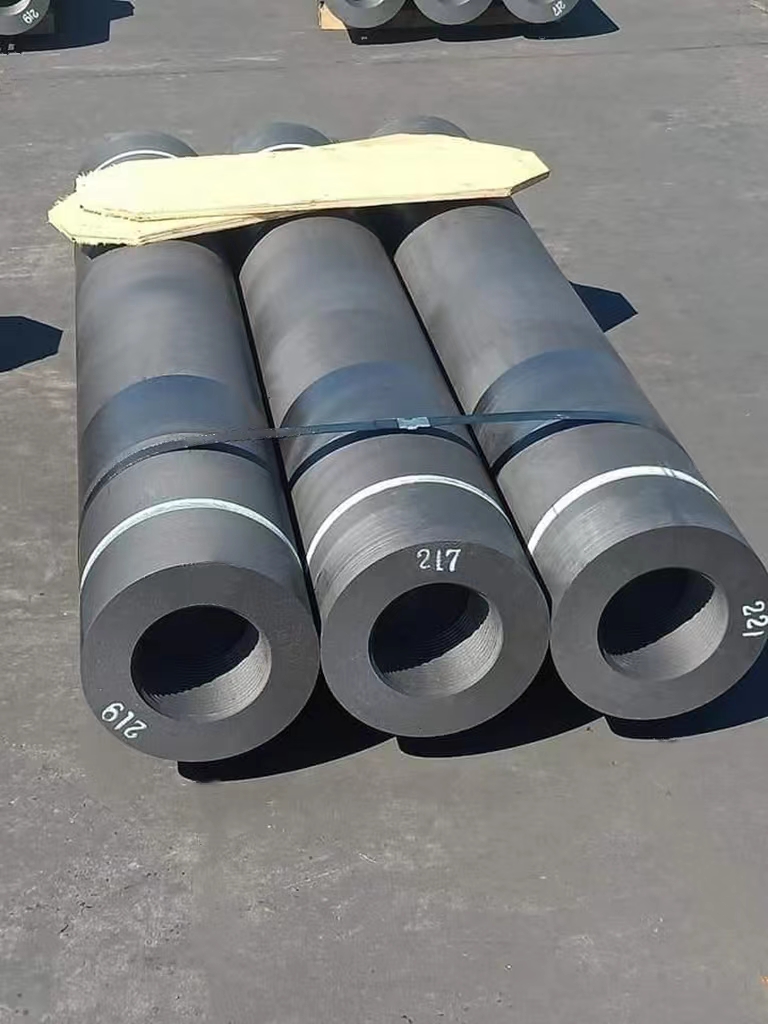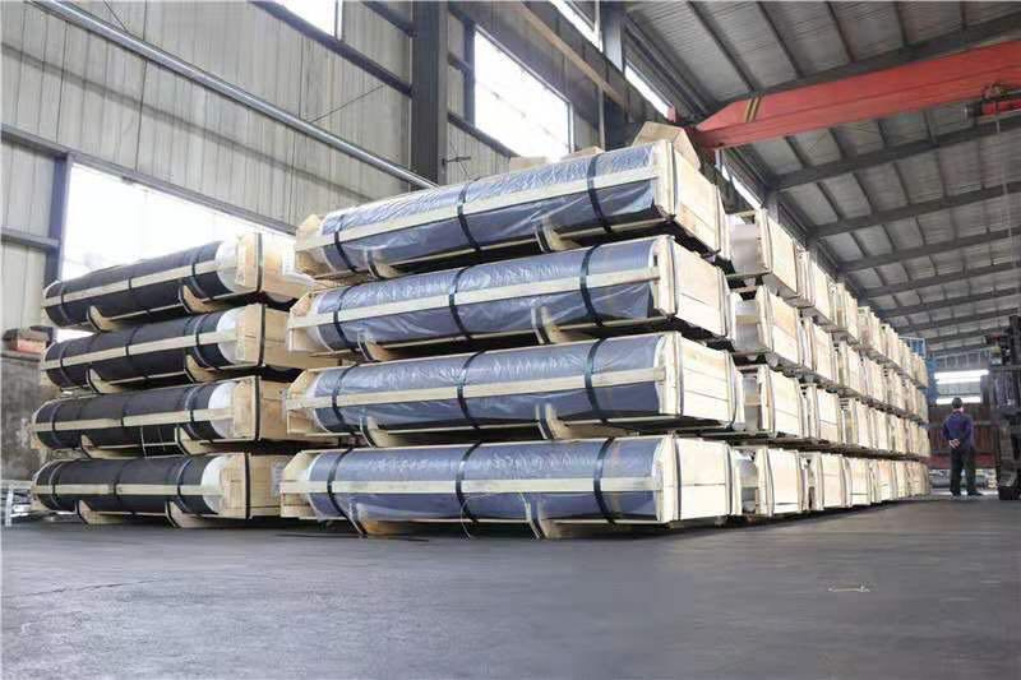L'utilizzo dell'elettrodo di grafite è in aumento a causa dello sviluppo delle applicazioni siderurgiche nei forni elettrici ad arco. A partire dal XX secolo, la domanda di acciaio speciale è aumentata notevolmente in settori quali automobili, aerei, macchinari e elettrolisi. Dopo gli anni '50, l'acciaieria con forno elettrico ad arco si è sviluppata verso la produzione di acciaio su larga scala e ad altissima potenza, che ha migliorato la produttività, e ha sviluppato un metodo di produzione dell'acciaio per la fusione di acciaio ordinario a partire da rottami di acciaio.
Indice dei contenuti
ToggleNegli ultimi anni, le acciaierie hanno iniziato a utilizzare i rottami di acciaio per produrre acciaio ordinario, promuovendo ulteriormente la produzione di acciaio con forno elettrico ad arco con il successo dello sviluppo del grande forno elettrico a corrente continua. Gli elettrodi di grafite fungono da conduttori nella produzione di acciaio con forno elettrico ad arco e svolgono un ruolo di supporto nel processo.
Elettrodo di grafite utilizzato per la siderurgia eaf
Elettrodo di grafite è utilizzato principalmente per la produzione di acciaio eaf. Grazie alla loro conducibilità elettrica e all'elevata stabilità termica e chimica, hanno un'ampia gamma di applicazioni nell'industria, come la raffinazione dell'acciaio, la fusione dei metalli e la produzione di leghe non ferrose.
La stabilità alle alte temperature li rende adatti a vari processi industriali. Questi elettrodi di grafite sono utilizzati per creare archi elettrici in varie applicazioni di fusione dei metalli. Tra queste, la fusione di acciaio e altri metalli, la creazione di leghe, la saldatura di fusioni e la forgiatura di parti.
Possono resistere a forti shock di corrente e non si ossidano facilmente come conduttori di corrente. Possono resistere a temperature estremamente elevate, pari a 3600 gradi Celsius. Attualmente, nessun materiale può sostituire gli elettrodi di grafite nel processo di fusione.

Proprietà degli elettrodi di grafite
- Densità: Rispetto ad altri materiali, la densità degli elettrodi di grafite è più elevata, compresa tra 1,6-1,78g/cm3.
- Conduttività: La particolare struttura a strati degli atomi di carbonio nella grafite favorisce il libero flusso di elettroni, per cui la conduttività è solida.
- Resistenza alla flessione: La grafite ha un'elevata resistenza meccanica, quindi la sollecitazione del momento flettente per unità di superficie è relativamente grande.
- Modulo di elasticità: Il modulo di Young aumenta con la temperatura.
- Conducibilità termica: La grafite è un minerale non metallico e il suo metodo di conduzione termica è la vibrazione termica degli atomi del reticolo per trasferire il calore.
- Coefficiente di espansione termica: È molto più basso rispetto ad altri materiali ed è più adatto ad ambienti con temperature elevate e variazioni significative.
- Resistenza alla corrosione: Grazie alle sue proprietà chimiche stabili, non reagisce con altre sostanze a temperatura ambiente.
Elettricità in grafite UHP
Elettrodo di grafite utilizzato per il forno elettrico ad arco in corrente continua
La lunghezza d'arco per unità di tensione del Forno elettrico ad arco in corrente continua è più significativo di quello del forno elettrico ad arco in c.a. e le condizioni operative degli elettrodi di grafite sono più severe.
L'industria richiede elettrodi con resistività, coefficiente di espansione termica e densità di massa più bassi per il funzionamento ad alta corrente.
Possiamo modificare le caratteristiche regolando le materie prime e i tipi di processo produttivo. È possibile controllare queste caratteristiche, che si adattano alle condizioni operative del forno elettrico ad arco.
Casi di studio specifici ed esempi di successo nell'uso di elettrodi di grafite:
Industria siderurgica: Sono ampiamente utilizzati nei forni elettrici ad arco (EAF) per la produzione di acciaio. Servono come elementi conduttori che creano l'arco elettrico per fondere il rottame. Gli elettrodi devono resistere a temperature estreme e ad elevate sollecitazioni meccaniche. Gli elettrodi hanno un'eccellente resistenza termica e meccanica e sono la scelta preferita per questa applicazione.
Industria dell'alluminio: Gli elettrodi di grafite sono utilizzati nel processo di fusione della produzione di alluminio. Sono utilizzati nell'elettrolisi dell'ossido di alluminio (ossido di alluminio) nelle celle elettrolitiche. Agiscono come catodo, trasportando la corrente per separare l'alluminio dall'allumina. L'elevata conducibilità elettrica e la stabilità chimica della grafite si adattano a questo processo.
Industria del silicio: Possono produrre silicio e altri materiali a base di silicio. Nella raffinazione del silicio, quarzo, coke, ecc. vengono utilizzati come materie prime per ottenere silicio di elevata purezza attraverso reazioni chimiche. Vengono utilizzati in un forno a resistenza per fornire il calore necessario alla reazione. Hanno un'eccellente stabilità termica e resistenza chimica.
Industria delle fonderie: Gli elettrodi di grafite producono prodotti in ghisa e acciaio nelle fonderie. In questo processo, vengono utilizzati nei forni elettrici ad arco per fondere il metallo e fungere da conduttori quando si avvia il processo di fusione. L'elevato punto di fusione e la conducibilità termica della grafite favoriscono un efficiente trasferimento di calore e possono migliorare la qualità delle fusioni.
Industria chimica: Sono utilizzati in vari processi chimici che richiedono alte temperature e conducibilità elettrica. Ad esempio, sono utilizzati negli elettrolizzatori per produrre cloro gassoso e soda caustica da soluzioni saline. Sono anche utilizzati per creare alcune sostanze chimiche, come il fluoruro di grafite, attraverso reazioni elettrochimiche.
Variazione della domanda di elettrodi di grafite
Oltre 95% di elettrodi di grafite artificiale sono utilizzati per elettrodi per forni elettrici ad arco. siderurgia. Pertanto, la qualità degli elettrodi è direttamente proporzionale al rendimento del forno elettrico ad arco per la produzione di acciaio. Approfittate di elettrodi di alta qualità con needle coke.
A livello mondiale, con l'aumento della produzione di acciaio nei forni elettrici ad arco e la diminuzione del consumo di elettrodi, la domanda di elettrodi di grafite artificiale potrebbe rimanere invariata o aumentare leggermente.
In futuro
Domanda e crescita: L'industria siderurgica è il principale motore del fabbisogno di elettrodi di grafite, che probabilmente rimarrà elevato con la crescita della produzione mondiale di acciaio. Inoltre, i settori emergenti, come quello dei veicoli elettrici e delle energie rinnovabili, probabilmente ne determineranno un'ulteriore domanda, soprattutto per applicazioni come la produzione di batterie agli ioni di litio.
Sostenibilità e preoccupazioni ambientali: Con la crescente attenzione alla sostenibilità e alla riduzione delle emissioni di carbonio, le industrie stanno esplorando processi e materiali alternativi. Sebbene gli elettrodi di grafite contribuiscano a processi efficienti dal punto di vista energetico e rispettosi dell'ambiente, come i forni elettrici ad arco, sono in corso ricerche per sviluppare alternative più sostenibili ed ecologiche.
Progressi tecnologici: Lo sviluppo di nuove tecnologie e materiali può avere un impatto sul futuro degli elettrodi di grafite. Ad esempio, i progressi delle nanotecnologie e dei materiali a base di carbonio potrebbero portare a nuovi materiali per elettrodi con prestazioni e proprietà migliorate.
Cambiamenti nei processi industriali: L'evoluzione dei processi industriali, come l'adozione di nuove tecnologie di fusione o di metodi di produzione alternativi, potrebbe influenzare la domanda di questi prodotti. È essenziale monitorare le tendenze e le innovazioni del settore per valutarne le prospettive.
In conclusione
Sebbene l'elettrodo di grafite svolga un ruolo significativo in diversi settori e applicazioni, per prevederne il futuro è necessario considerare diversi fattori. La crescita delle industrie che si affidano all'elettrodo di grafite, i progressi nella scienza dei materiali, le preoccupazioni per la sostenibilità e le tecnologie emergenti daranno forma al panorama futuro. Il monitoraggio delle tendenze del settore e dei progressi tecnologici è fondamentale per determinare le prospettive a lungo termine.



